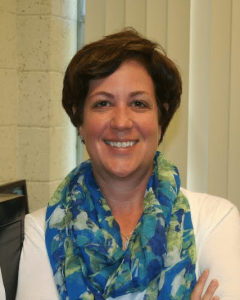Farmers use math to save water as drought grips California
September 10, 2014Clemson University associate professor helps create ‘virtual farms’
The “virtual farm” models that a Clemson University associate professor helped develop are taking on heightened importance this summer as California’s strawberry-and-raspberry growers cope with an unprecedented drought.
Dr. Lea Jenkins was part of a team sponsored by the American Institute of Mathematics that created models to help farmers in California’s Pajaro Valley make best use of their land and water. The research helped confirm for farmers that they needed to grow more raspberries to remain profitable, she said.
Berry farming in California could have ripple effects across the nation. More than 2.3 billion pounds of strawberries were harvested from the state last year, amounting to 88 percent of the nation’s fresh and frozen strawberries, according to the California Strawberry Commission.
Jenkins said the models she helped develop could apply broadly beyond California and that she is looking for opportunities to use them in South Carolina. They could be used for farms of any size, she said.
Models included a number of factors, including costs, growing cycles and groundwater levels. Researchers worked with a farming cooperative of berry farmers in the Watsonville, California area.
“I think we’ve hit upon the problem at just the right time, while they’re undergoing drought,” Jenkins said. “They’ve been very interested in incorporating our suggestions.”
The research began at a sustainability workshop in 2011 when growers asked for help maintaining their livelihood while operating under irrigation limits. Water use restrictions had been put in place to help the valley’s aquifer recover after decades of increased use and extended periods of drought.
Researchers simulated a 100-acre farm where a “virtual farmer” planted and moved crops under the constraints of various planting rules. The model computed profits and irrigation needs.
The results were used to evaluate strategies and suggest ways of maximizing profit, minimizing water use and minimizing the distance water has to be carried from its source to where it’s needed for irrigation.
Even after the drought subsides, the models could remain useful to the valley’s growers, Jenkins said.
“We’re trying to give them a long-range plan under varying precipitation scenarios and pricing strategies to help them figure out what to do for the next 10 to 15 years,” she said. “Even if the drought conditions ease, how can they manage their farm portfolios?”
The next step in the research is to fine-tune the models by trying out different farming scenarios and then asking farmers how the results are matching up with what they see in the fields.
Researchers are also hoping to help develop a network of basins that catch floodwater so that it can be channeled into the aquifer. Jenkins said the team can recommend ways of minimizing construction costs while still meeting the target rate of water that infiltrates the subsurface.
Jim Coykendall, chair of Clemson’s Department of Mathematical Sciences, said Jenkins and the team have found an innovative way to save water where it’s needed most, while helping California’s agricultural economy make it through a tough time.
“Water is one of our most valuable natural resources,” he said. “One of our grand challenges is to use those resources sustainably. I applaud Dr. Jenkins and the entire team on creatively applying math to a real-world challenge.”
Researchers met once a year in California as they developed the models. Participants included John Chrispell of Indiana University of Pennsylvania; Matthew Parno of the Massachusetts Institute of Technology; Stacy Howington and Matthew Farthing, of the U.S. Army Corps of Engineers-Engineer Research and Development Center; and Stephen Carter, Kathleen Fowler and Corey Ostrove, of Clarkson University.
The research was supported by National Science Foundation award #1128242, American Institute of Mathematics Research Conference Center: A Model for Collaborative Research.

















